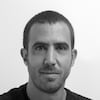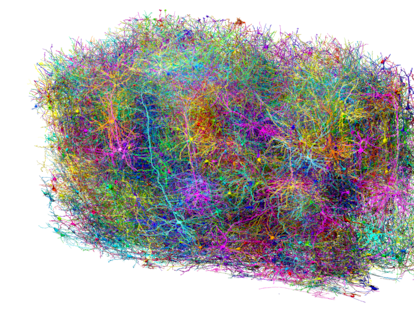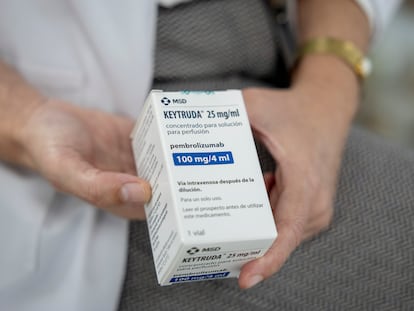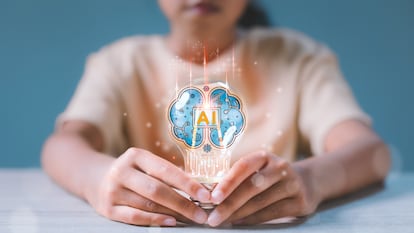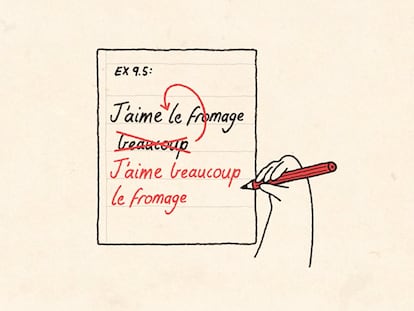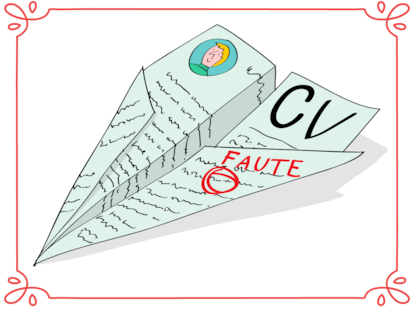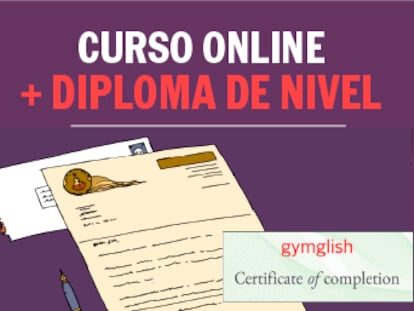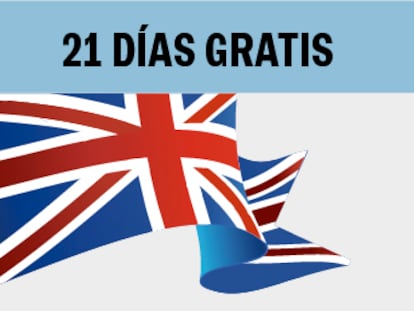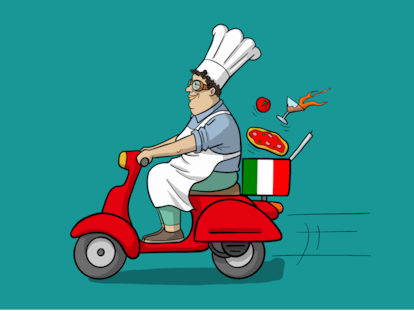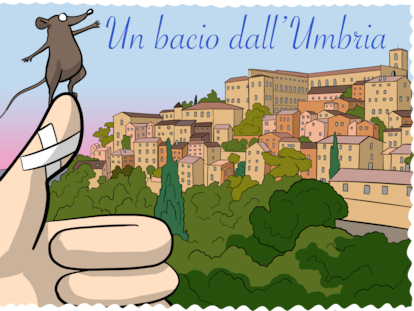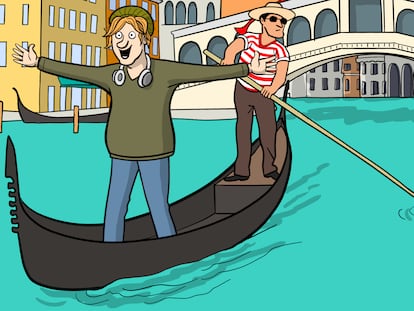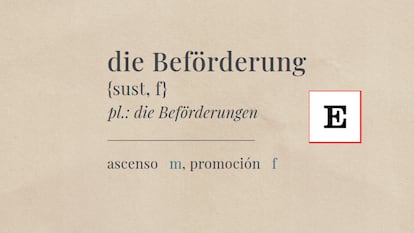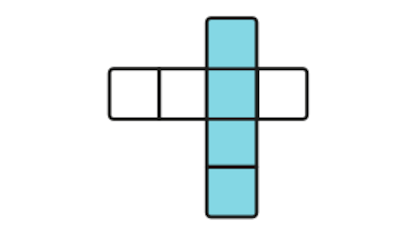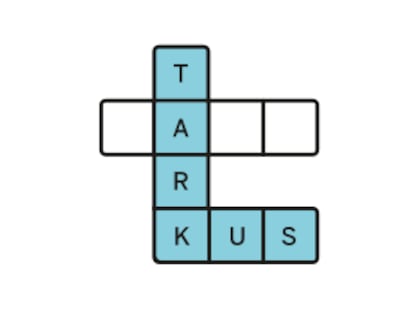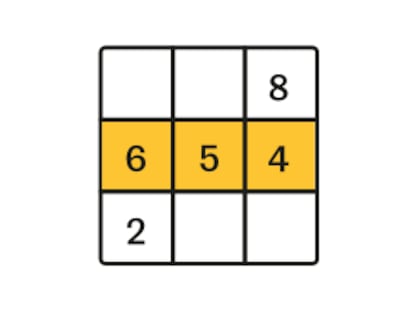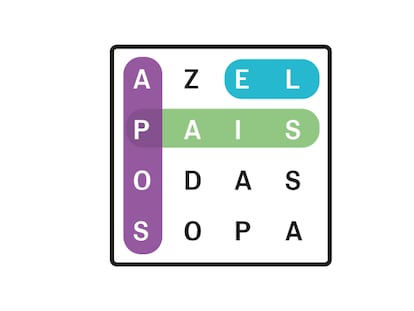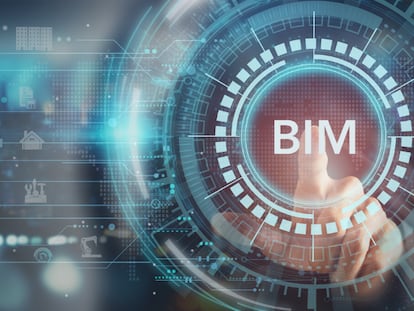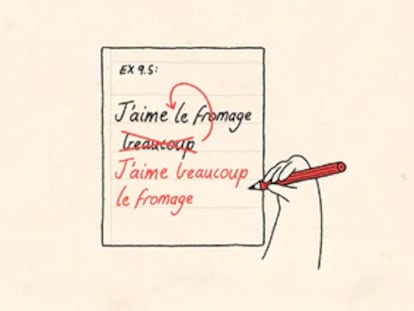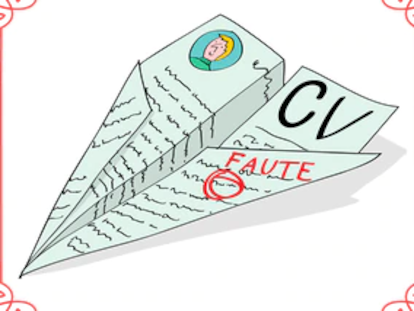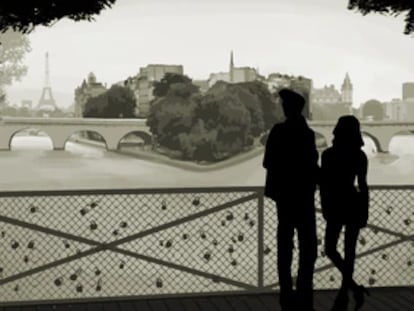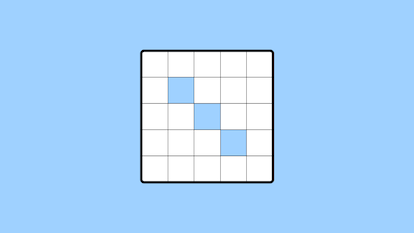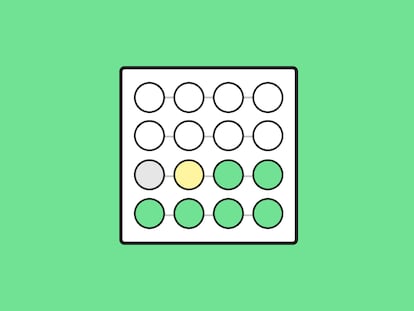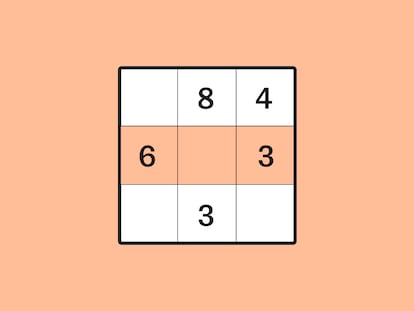Paul Mischel, discoverer of a new cause of cancer: ‘It will be possible to cure it in many people’
The American doctor has revealed that enigmatic DNA circles are present in more than half of patients with highly aggressive tumors
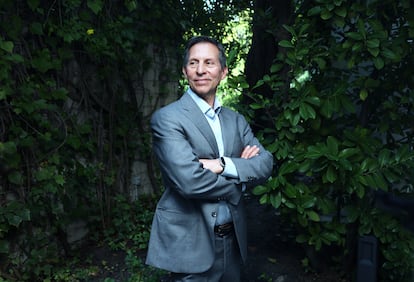
When the Nazis invaded Austria in 1938, a Jewish teenager named Theodore Mischel fled with his family to the United States just in time to avoid getting killed. The young man returned to Europe as an American soldier and miraculously survived World War II. He was spared combat in the Battle of the Bulge, one of the deadliest battles of the war, because he contracted mumps. He had dodged death twice, but years later, a lethal and excruciatingly painful stomach tumor crossed his path. His son Paul, then 14, decided he would study medicine and dedicate his life to fighting cancer. He wanted to “look the enemy in the eye.” Five months ago, his team discovered that mysterious, tiny DNA circles appear in the cells of more than half of patients with highly aggressive tumors. Mischel, born 62 years ago in upstate New York, is leading a $25 million international consortium to solve the mystery of these DNA loops. He believes his work “could revolutionize the treatment of up to a third of all cancer patients.”
Mischel, from Stanford University, visited Madrid to participate in a symposium organized on Thursday by the CRIS Cancer Foundation, a non-profit organization that announced an investment of €11 million to fund cancer research projects. The American doctor, who is a member of the Spanish foundation’s international scientific committee, made a momentous discovery in 2014. The human cell’s instruction manual, DNA, is mostly stored in packages called chromosomes. In 1965, researchers in the United States and the United Kingdom detected an enigmatic extrachromosomal circular DNA, hundreds of times smaller, in the cells of people with tumors. For half a century, this genetic material was considered rare and insignificant. Until Mischel’s team revealed, just over a decade ago, that this tiny bit of DNA outside the chromosomes was linked to highly aggressive cancers. Five months ago, he announced that these elusive molecules — which contain mutated genes that cause cancer or genes linked to the ability to evade the body’s defenses — are omnipresent in people with the most lethal tumors. It’s a new paradigm. Mischel compares it to the discovery that the Earth was not the center of the universe.
Question. You wanted to “look the enemy in the eye.” What have you seen in that gaze over the decades?
Answer. I saw something that doesn’t care. It’s our own cells that stop listening to us, looking out for themselves and not us. And I’ve seen the horror. It’s frightening: our own cells are going rogue, which is why it’s such a problem. Those cells are us, but not entirely us anymore. We’re going to have to be very thoughtful and wise to prevent it from happening, to catch it early if it does happen, and to treat it far more effectively. And I think it will be possible to cure it in many people; we’re already seeing it.
Q. Is this extrachromosomal circular DNA a trigger for cancer or a consequence of an existing tumor?
A. It's not just a consequence, it's a trigger. We've studied people with Barrett's esophagus [a disorder caused by acid reflux from the stomach, which increases the risk of developing a malignant esophageal tumor], and if they had higher levels of extrachromosomal DNA, cancer developed later. We also have evidence in mice of its biological mechanism, which shows that it's a transformative event that causes cancer. It's a trigger.
Q. This circular DNA was identified in 1965, but until 2014 it was thought to be rare and of no importance.
A. We had a high-resolution map of the human genome, but it was from normal cells in healthy people. The inference was that what you detected in a cancer cell was in the same place as in a normal cell, but it turns out not to be. Often, those genes that were driving cancer weren't where we thought they were according to the map [within the chromosomes], but were in extrachromosomal DNA elements.
Q. You compare the old chromosome-centered cancer paradigm to astronomer Ptolemy's old map of the solar system, with planet Earth at the center. In that example, you are Nicolaus Copernicus, who placed the Sun at the center.
A. That would be saying something. Let’s just say I’m someone who was inspired by Copernicus and asked this question: Where are things actually in the cancer genome? The map was wrong.
Q. Five months ago your team published a study that revealed that this circular DNA is found in 17% of the cancer patients whose samples were analyzed, but the percentage exceeds 50% in people with some very aggressive tumors, such as HER2+ breast cancer and glioblastoma in the brain.
A. And in many other types. We finally had a clear idea of how frequent this was. And the answer is: very frequent.
Q. And is extrachromosomal DNA the trigger for all these tumors?
A. I don’t think we can necessarily say that. What we can say is that it’s there in all of these cancers. If you also consider our other data, which show that extrachromosomal DNA can be a factor that causes cancer, then I think we can assume, with relative certainty, that in some of these patients it was the causative event. We’re also seeing that extrachromosomal DNA can become a problem by causing resistance to cancer treatment. These circles are one of nature’s ways of rapidly changing genomes. And that’s exactly what’s happening, both in causing cancer and in creating resistance to treatments.
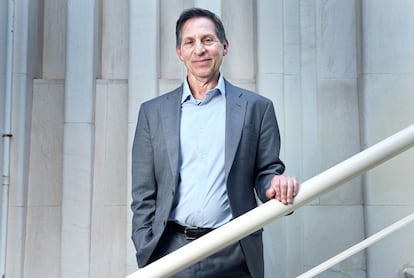
Q. You have $25 million to research this circular DNA. What questions do you want to answer with that money?
A. We set out to answer several questions: How does it form? How does it function? What goes wrong for this to happen in the first place? How does it evolve and how does it cause cancer to evolve? What is its role in the development of resistance to treatments? How does it affect the immune system? Could we find a way to activate the immune system against this extrachromosomal DNA? And finally, can we develop new treatments? There is still a lot of work to do, but we have already begun to transform our fundamental understanding of some of the most aggressive cancers.
Q. One of your friends had glioblastoma and told you, “Whatever you do, do it quickly, because people like me don’t have much time.” When will we see treatments targeting extrachromosomal DNA?
A. The first one is already in clinical trials in patients. It’s a drug targeting a protein called CHK1, and it’s being tested by a company we founded, called Boundless Bio. And there are more in the pipeline. We need to develop more effective treatments, because these are the patients who are being left behind. Patients like my father, who likely had this extrachromosomal DNA. He had stomach cancer, a type of tumor where about 38% of patients have these circles. And, in really aggressive cases, even more. My father’s was very aggressive.
Q. Does that drug work?
A. We don’t know, it’s being tested.
Q. Does it work in mice?
A. Yes, it works very well in mice and is now being tested in people. I'm confident we'll have effective treatments for patients with tumors driven by this extrachromosomal DNA.
Q. Your consortium’s website claims you could “revolutionize treatment for up to a third of all cancer patients.” Do you believe that? A third of all patients?
A. I believe so. In the study we published five months ago, we saw that this circular DNA was present in 17% of all cancers, but that data corresponded mainly to early-stage tumors. Now we know that, as cancer progresses and metastasizes, the frequency increases. We don't know what the maximum percentage is.
Q. Is it theoretically possible to have a single drug for that third of cancers?
A. That’s been everyone’s dream, to have a drug that would work across these types of cancer. I think it’s within the realm of possibility that we could develop drugs that work on tumors that have extrachromosomal DNA, regardless of the type of cancer. In this field, we’ve learned that most malignant tumors, when not detected very early, generally require multiple drugs. So, of course, we’re going to have to investigate this possibility as well.
Q. In recent weeks, the Trump administration has canceled or frozen billions of dollars in science funding. Do you have a problem with Trump’s cuts? [The $25 million for his consortium comes from the U.S. National Cancer Institute and Cancer Research UK.]
A. Cancer research is incredibly important. What most people fear most is cancer. It’s a scourge. It’s a plague on humanity. There’s nothing more important, and I think it’s critical that we put all our resources into helping these patients and into research, which is the heart of that help. It’s an obligation. The people we need to listen to are the people whose children, siblings, partners, parents are suffering from cancer. People like me don’t do this work for ourselves. We’re inspired to change things because this is one of the biggest problems facing humanity. So my answer is that the right thing to do now, both in the United States and around the world, is to make a full-on effort to ease the burden of suffering from cancer, to figure out how to prevent it, how to diagnose it early, how to treat it more effectively. Nothing is more important.
Q. Are there also cuts in cancer research funding under the Trump administration?
A. We don’t know what’s going to happen, really, and that uncertainty is a very difficult situation. We need to make it very clear that funding for cancer research is critical. I think most people see it that way, because I don’t know anyone whose family hasn’t been affected by cancer.
Sign up for our weekly newsletter to get more English-language news coverage from EL PAÍS USA Edition
Tu suscripción se está usando en otro dispositivo
¿Quieres añadir otro usuario a tu suscripción?
Si continúas leyendo en este dispositivo, no se podrá leer en el otro.
FlechaTu suscripción se está usando en otro dispositivo y solo puedes acceder a EL PAÍS desde un dispositivo a la vez.
Si quieres compartir tu cuenta, cambia tu suscripción a la modalidad Premium, así podrás añadir otro usuario. Cada uno accederá con su propia cuenta de email, lo que os permitirá personalizar vuestra experiencia en EL PAÍS.
¿Tienes una suscripción de empresa? Accede aquí para contratar más cuentas.
En el caso de no saber quién está usando tu cuenta, te recomendamos cambiar tu contraseña aquí.
Si decides continuar compartiendo tu cuenta, este mensaje se mostrará en tu dispositivo y en el de la otra persona que está usando tu cuenta de forma indefinida, afectando a tu experiencia de lectura. Puedes consultar aquí los términos y condiciones de la suscripción digital.
More information
Archived In
Últimas noticias
Mexico’s missing people crisis casts a shadow over World Cup venue
Can cheese protect brain health? This is what the science says
ICE raids trigger school absenteeism and traumatize children: ‘They have been forced to leave their childhood behind’
Families demand repatriation of bodies of Colombians who died in Ukraine: ‘This war is a slaughterhouse for foreigners’
Most viewed
- Christian Louboutin: ‘Young people don’t want to be like their parents. And if their parents wear sneakers, they’re going to look for something else’
- US sanctions against jailed cartel leader ‘El Marro’ highlight Mexico’s lack of control over its prisons
- Cartels in Mexico take a leap forward with narco-drones: ‘It is criminal groups that are leading the innovation race’
- Liset Menéndez de la Prida, neuroscientist: ‘It’s not normal to constantly seek pleasure; it’s important to be bored, to be calm’
- ‘El Limones’ and the growing union disguise of Mexican organized crime
